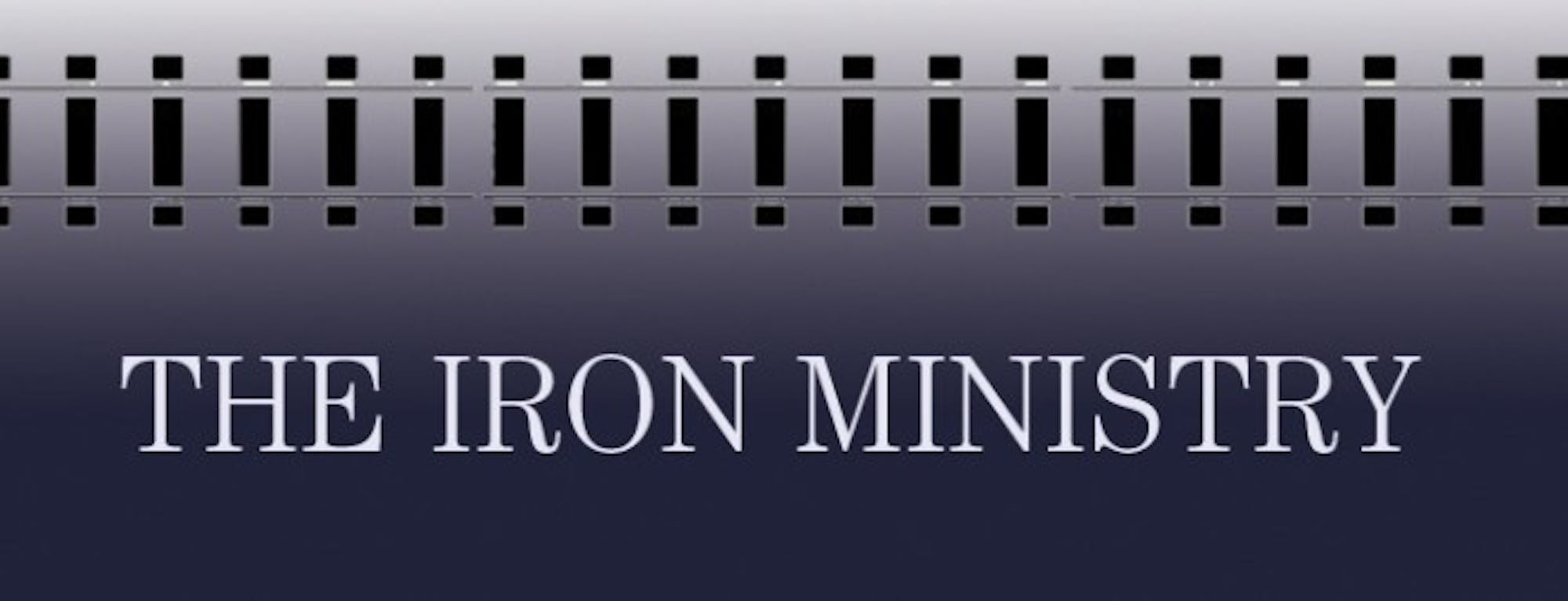
Like Paul Thomas Anderson’s “Boogie Nights,” the opening minutes of J.P. Sniadecki’s Chinese railway documentary, “The Iron Ministry,” use a black screen to draw attention to the film’s sound design, which sets the film’s tone. Where Anderson foregrounds Michael Penn’s score — a broken circus theme of sorts that distills the melancholy zeitgeist of an industry (and a nation) in flux — Sniadecki presents an aural assault. The high-pitched whistle of air brakes disengaging, the clanking of the inter-carriage couplings as the engine yanks the carriages from their slack dormancy to full tension and the earth-shaking rumble of an approaching train compose a mechanical symphony. The message is clear: the next 80 minutes are to be a no-holds-barred immersion into life on the Chinese railway.
A grey corrugated surface breaks the blackness. A few moments elapsed before I realized this giant accordion was the space between two carriages. By this point in “The Iron Ministry,” Sniadecki had proven himself to be far too deliberate/discerning for the film’s first image to amount to a pretentious attempt at uncovering the art within the machinations of the railroad. (A rather impressive feat, I might add!) My suspicions were confirmed during a Q&A session with Sniadecki after the screening at the DeBartolo Performing Arts Center on Thursday evening. As a sort of in-between space, Sniadecki explained, the coupling between carriages is a microcosm of a train as a whole, which exists mostly in between the point of departure and its destination.
“The Iron Ministry” is the latest example of a sub-genre within documentary filmmaking that prizes objective sensory overload over narrative coherence. These films — which have roots in Harvard University’s Sensory Ethnography Lab — present a constant barrage of sights and sounds that may seem random, even jarring, to some. To Sniadecki, however, this mode of filmmaking is all about “embracing the fundamental ambiguity and messiness of life,” and is a way of portraying life’s complexity, rather than pigeonholing it into an all-too-familiar narrative arc. I’m inclined to agree with Sniadecki, but he doesn’t always make this an easy task.
Here, the immersive style juxtaposes claustrophobia-inducing shots from within loud, outdated “green-skin” trains with spacious compositions of the hushed interiors of state-of-the-art bullet trains. While these transitions may be a fair representation of the Chinese railway network’s diversity — certainly as Sniadecki experienced it — I have a hard time believing they are entirely free of commentary.
A clearer example of the film’s contradictory nature is delivered by some of its most interesting scenes. “The Iron Ministry” presents several scenes in which passengers discuss religion and politics on national and global scales. Visually, these scenes are presented with the same handheld, fly-on-the-wall style as the rest of the film. A style that — whether Sniadecki intends it to or not — suggests a level of objectivity beyond what is seen in narrative documentaries like “Hoop Dreams.” The problem arises when Sniadecki converses with the passengers in fluent Mandarin. Suddenly, the promise of the film’s style — its tacit agreement to merely document — is broken. We are observing not an organic interaction between passengers, but a contrivance. Even Sniadecki’s silent presence alone — by way of psychological principles like impression management — is enough to taint the course of natural conversation between passengers, and ultimately, the film’s objectivity. It’s a problem akin to Schrödinger's cat — in that merely observing a phenomenon is sufficient to irreparably change it — and is one that the film’s style dispels without truly solving.
When asked, “Why trains?” Sniadecki shared a childhood anecdote, then stressed that trains are something of a microcosm of an ever-changing China — a nation on a journey — and even of documentary filmmaking itself. It’s an audacious claim, one that I would likely dismiss if “The Iron Ministry” were a bad film. Rather, in its repudiation of typical documentary narrative structure and its self-proclaimed (though slightly misguided) commitment to documenting over editorializing, “The Iron Ministry” asserts itself as a film that is often good, at times contradictory but never anything less than truly interesting.













